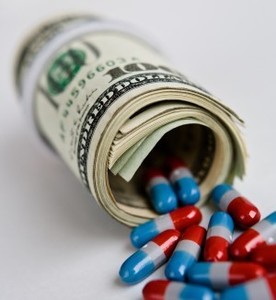Growth in spending on medicines in the US increased by US$46.2 billion, or 12.2%, over 2014 levels, reaching US$425 billion in 2015. The increase was fuelled by the number of new medicines launched (43 new active substances were launched in 2015), while the savings from brand-name drugs facing generics competition were relatively low.
According to the report from IMS Health, although the growth in spending in 2015 was slightly lower than 2014, when there was a 14.2% increase, growth still continued at the highest levels since 2001.
Spending on specialty drugs (which includes biologicals) reached US$121 billion on a net price basis, up more than 15% from 2014, and contributing 70% of overall medicine spending growth between 2010 and 2015.
Spending on generics increased by US$7.9 billion (7.4%) to US$114.1 billion in 2015. Branded generics contributed the most to this increase, accounting for 40% of spending on generics and 45% of generics spending growth in 2015. Price increases for older generics (seen in 2013 and 2014) are also estimated to be no longer contributing to the growth in spending. Spending on single source generics increased in 2013 and 2014, but only accounted for 7% of generics sales and 19% of generics spending growth in 2015.
Despite increased spending on generics, the report estimated that US$14.2 billion in spending was saved due to recent patent expiries. The launch of generic celecoxib and valsartan in 2014 led to US$6.1 billion lower spending on the brand-name drugs they replaced in 2015. The biggest patent expiries for 2015 were for the anti-psychotic Abilify (aripiprazole), for stomach acid treatment Nexium (esomeprazole) and for Alzheimer disease treatment Namenda (memantine). The loss of exclusivity for the blockbuster drugs – Suboxone (buprenorphine/naloxone), Neupogen (filgrastim) and Copaxone (glatiramer acetate) – did not result in significant declines in brand-name drugs spending.
The average cost to patients for a brand-name drug prescription filled through a commercial plan has increased by more than 25% since 2010, reaching US$44 per prescription in 2015. The cost to patients for generics, however, has remained at approximately US$8 since 2010.
In March 2015, the US Food and Drug Administration (FDA) approved its first biosimilar – Zarxio (filgrastim-sndz) – via the biosimilar pathway [1]. Since its launch in August 2015 up to December 2015 filgrastim biosimilars had contributed savings of over US$72 million, with Zarxio gaining 5% of sales after five months on the market. In April 2016, FDA also approved the country’s second biosimilar – Inflectra (infliximab‑ dyyb) [2], with several other biosimilars under FDA review the prospects for future savings appear to be rosy.
Related articles
Generics and biosimilars contribute to European drug savings
EU health spending in 2010 decreases for first time since 1975
References
1. GaBI Online - Generics and Biosimilars Initiative. Zarxio first biosimilar to be launched in US [www.gabionline.net]. Mol, Belgium: Pro Pharma Communications International; [cited 2016 May 20]. Available from: www.gabionline.net/Biosimilars/News/Zarxio-first-biosimilar-to-be-launched-in-US
2. GaBI Online - Generics and Biosimilars Initiative. FDA approves infliximab biosimilar Inflectra [www.gabionline.net]. Mol, Belgium: Pro Pharma Communications International; [cited 2016 May 20]. Available from: www.gabionline.net/Biosimilars/News/FDA-approves-infliximab-biosimilar-Inflectra
Permission granted to reproduce for personal and non-commercial use only. All other reproduction, copy or reprinting of all or part of any ‘Content’ found on this website is strictly prohibited without the prior consent of the publisher. Contact the publisher to obtain permission before redistributing.
Copyright – Unless otherwise stated all contents of this website are © 2016 Pro Pharma Communications International. All Rights Reserved.








 0
0











Post your comment